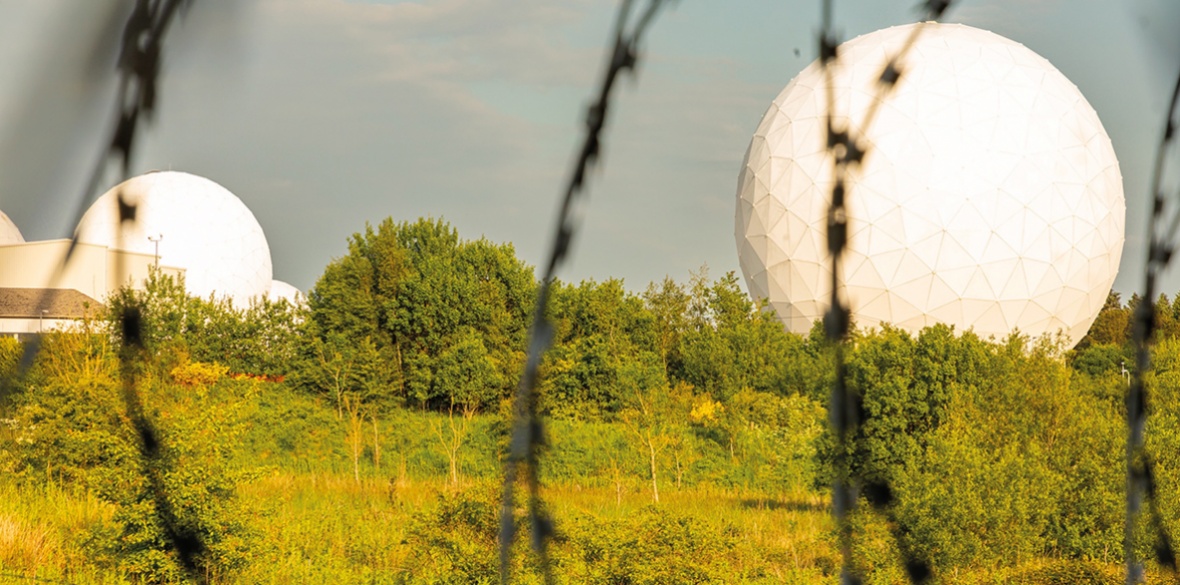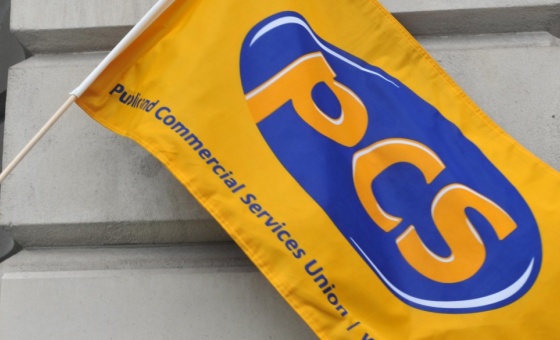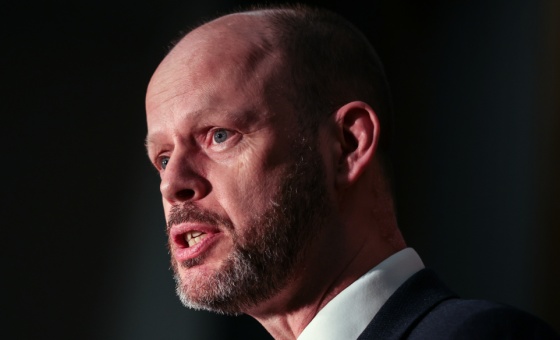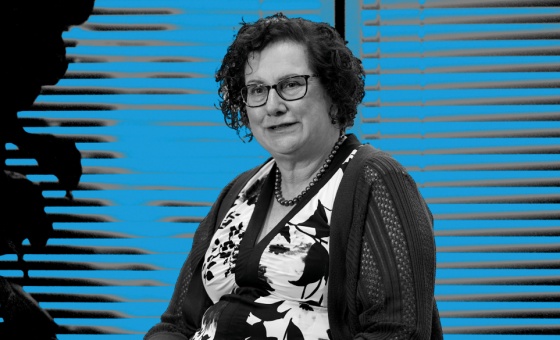This is the last article you can read this month
You can read more article this month
You can read more articles this month
Sorry your limit is up for this month
Reset on:
Please help support the Morning Star by subscribing here
IT IS now evident that then-Tory prime minister Margaret Thatcher and her cabinet viewed the miners’ strike as a war, identified the National Union of Mineworkers (NUM) as “the enemy within,” and used a military strategy to defeat the strike.
One of the tactics used in war is spying — the gathering of intelligence to gain an advantage by knowing the strength of the enemy, what it is doing and what it is going to do.
In 1985 Cathy Massiter, employed by Britain’s security service (MI5), “blew the whistle” and revealed that, under the cloak of a threat to national political and economic interests, “subversive elements” (notably communists and Morning Star readers) infiltrated organisations such as trade unions, thus were subjected to surveillance — and Mick McGahey was not the only communist in the NUM.
Robin Robison exposed that the government Communications Headquarters (GCHQ) monitors the phone calls of British activists opposed to the status quo. GCHQ is complicit with its (vastly bigger) partner, the US National Security Agency (NSA), under the umbrella of the UKUSA Alliance.
In 1984, when telecommunications technology pre-dated fibre-optic cables, mobile phone networks and the internet, phone calls were relayed by landlines (mainly carried on wires strung between telegraph poles or underground cables); by a microwave network of dish antennas mounted on line-of-sight masts, usually located on remote hilltops, and long-distance international calls were relayed by satellites (eg the Intelsats) downlinking to transceiver stations such as Goonhilly Downs in Cornwall. All telephone calls transmitted over the different relay systems could be intercepted while in transit.
International commercial communications are intercepted by the NSA with dish antennas directed at the satellites concealed inside “golf balls” at Menwith Hill. The NSA and GCHQ jointly operate another intercept station at Bude, adjacent to Goonhilly Downs.
The security service and its Special Branch police could tap telephone landlines discretely, but legally only one at a time and only when authorised by a warrant issued by the home secretary.
However, it was evident that mass interceptions were being conducted during the strike on a scale that only the NSA and GCHQ had the technology to perform. When home secretary Leon Brittan denounced as “a smear” the accusation that the NUM’s telephones were being tapped, that statement did not constitute an actual denial.
Every Friday after the miners had collected in Otley Marketplace, I would call the NUM branch secretary at Sharlston Colliery and once, as his phone was ringing, I could hear a recording of his previous conversation.
When I told him about it and suggested that it was an indication that his phone was being tapped, he said it wasn’t the first time it had happened. I mentioned it to Duncan Campbell, author of Telephone Tappers and the Security State, 1981, but he told me that telephone tapping is undetectable and that such interference was being used as a deliberate intimidation tactic.
The collusion between the telephone service providers and the NSA to facilitate mass interceptions was exposed by Duncan Campbell, when he discovered that 5400 links went inward-only on a spur to the government Post Office’s Hunters Stones microwave tower located on Norwood Edge, about four miles south of Menwith Hill, and which was connected to the base by underground cable.
He deduced that the NSA could collect two million phone messages an hour. It was evident that Hunters Stones tower had been built exclusively to service Menwith Hill (and presumably at the expense of British taxpayers).
A large part, possibly the bulk, of domestic telephone calls in the 1980s were relayed over the microwave network. Interception of this system can be carried out by collection of the “spillage” from the microwave beam, as it bypasses the dishes on the masts and transmits out into space.
Parked in geostationary orbit 22,300 miles above the Equator, the NSA’s signals intelligence (SIGINT) satellites are equipped with huge parabolic antenna dishes to intercept this microwave spillage and transmit it to ground terminals at Menwith Hill. In 1984 Menwith Hill controlled four of these geosat “spook birds,” codenamed VORTEX, but GCHQ did not possess any, so was dependent on the NSA for intelligence from this source.
What the NSA was prepared to give was limited, so Maggie was determined that Britain should have its own independent SIGINT satellite programme and embarked on the ZIRCON project, which was abandoned in early 1987, after Duncan Campbell exposed it and on grounds of excessive cost.
The receiving antennas inside Menwith Hill’s golf balls are connected to windowless and electronically shielded Ops buildings. In 1984 the NSA’s state-of-the-art processing computers, predating microchip technology, were each the size of several washing machines and can now be seen in its museum. They were programmed to recognise particular words and monitor the conversations of people on a “watch list.”
Rows of eavesdropping spooks could twiddle knobs and listen in through headphones. Selected telephone messages were recorded on large reel-to-reel tape recorders. Until the early 1990s, tape canisters were transported twice a day to Leeds/Bradford Airport in plain vans, with an armed guard passenger riding shotgun.
The Menwith Hill-Hunters Stones cable could also relay “raw take” and processed “product” out of Menwith Hill. Some of it went to GCHQ at Cheltenham, for further analysis and evaluation. Within Cheltenham, the NSA has two cryptologic sections operating under the auspices of the Special US Liaison Office (SUSLO).
When the NUM was transferring its funds from bank to bank across Europe in an attempt to evade sequestration, its leadership may have been unaware that they could not do so in secrecy, because the transactions were conveyed electronically and could be monitored by the NSA.
During the strike, the police set up a National Reporting Centre to appraise the intelligence and co-ordinate police operations. The police were remarkably well informed about the strikers’ activities, such as the movements of flying pickets — apparently too well informed, because it prompted a widespread belief among miners and their supporters that their phone calls were being listened to and that Menwith Hill must be meddling in the strike, although there was then no definite proof.
A group from the South Yorkshire Coalfield, concealed under cover of darkness in the wood near Hunters Stones, dug up the cable connecting to Menwith Hill. They pulled it up, shoved a plank under it and (with their knees trembling in case it might be the electricity cable) chopped a lump out of it with an axe. They reburied it hoping that the engineers would be unable to find the break. Although I have only hearsay evidence of the above story, curiously, possible confirmation emerged years later.
Declassified documents released to Duncan Campbell under the US Freedom of Information Act contained a copy of a fax sent in 1985 from SUSLO-London to the director of the NSA at his Fort Meade, Maryland HQ, to inform him about cables being cut: “There are allegations of sabotage (deliberate cutting of cables) although we have not yet experienced significant impact on communications supporting cryptologic operations … The all-knowing NSA does not know everything, because they attributed it to members of the Communication Workers Union (CWU).”
The existence of the Menwith Hill-Hunters Stones cable connection has never been officially admitted, but during the case of R v Anne Lee and Helen John, at York Crown Court in 1997 (where we faced charges of multiple incursions into Menwith Hill), British Telecom responded to our witness summons and issued a statement that the original cable had been replaced by two fibre-optic ones.
The judge ruled that this evidence was so sensitive it must not be produced in open court but was informed that Duncan Campbell had already posted it on the internet, prompting him to expostulate: “Half the cat is out of the bag!” The judge was wrong to suppose that cables external to Menwith Hill can be kept secret because it is impossible for them to be installed covertly.
The evidence is visible on the ground (manhole covers, repairs to the road surface, disturbance of the grass verges, activities of telephone engineers and the local highways authority notified about digging up the roads). Lots of people, not just the NSA and the CWU, know about them, but nobody would ever dare to dig them up, because two of them are 33-megawatt electrical cables.
While GCHQ and the NSA enjoy a cosy mutual relationship for the exchange of intelligence, the NSA derives the greater benefit. Its Menwith Hill station occupies a very favourable geographical location and all the services the NSA requires to run it, such as water supply, security fences and CCTV cameras, are supplied free under the provisions of the Visiting Forces Act.
The collusion with the NSA raises the question: who has the authority to grant permission to allow a foreign agency to intercept British citizens’ communications without any accountability or control?
It significantly breaches the nation’s civil liberties and illustrates the extent of the powers the Establishment can use against its own people without the justification of wartime emergency regulations.










